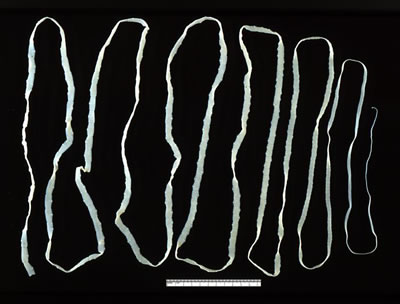
This Taeniasis overview provides basic information on this parasitic worm. The species is native to sub-Saharan Africa, south of 30 degrees north. Its distribution ranges into the southern New World, but it is also present in sub-Saharan Africa. In the Nearctic biogeographic region, it is found only in southern areas of the continent. Its life history is complex, and there are no known predators.
The disease is caused by the parasite Taenia saginata. It is a parasitic infection of animals and is estimated to cause a billion dollars in economic loss per year. There are several types of taeniasis, including atypical taeniasis and neurocysticercosis. This article focuses on three different species that cause human disease. You can read more about the three different types of taeniasis by reading this guide.
The most common symptoms of a taenia infection are nausea and abdominal discomfort. Increased eosinophils are common in the bloodstream of infected individuals. Some infected persons may exhibit increased levels of inflammatory cells. However, in rare cases, cystercercosis is caused by ingestion of T. solium eggs. The eggs hatch in the small intestine and migrate to various tissues.
The best way to identify Taenia infection is through a faecal worm analysis. This test is the only way to accurately diagnose this disease and is now available in some countries. It is a simple, inexpensive way to diagnose the disease. The current tests are not highly sensitive and are expensive. There is also a lack of sensitivity in the test, and it’s not clear if there is a cure yet.
The World Health Organization has recognized taeniasis as a potentially eradicable parasitic disease. Its prevention focuses on improving hygiene and sanitation, and aggressive chemotherapy is used to reduce the number of human carriers. The disease is most common in low-income countries. Infecting people with taeniasis is very common, especially in developing countries. If you eat undercooked beef or pork, you’re more likely to contract it.
This parasitic worm causes severe, chronic illness. It affects the brain, nerves, and other tissues of the body. It is the leading cause of epilepsy in low- and middle-income countries. Its symptoms are a result of neurological damage caused by the worms. The parasite causes seizures in humans, and is responsible for approximately one-third of all cases of the disease in low- and middle-income countries.

The disease is common in tropical countries. It affects women and children in low- and middle-income countries. In low-income countries, it is the leading cause of epilepsy. The virus is caused by the worm Taenia saginata. Vaccines are available for taeniasis. The disease is spread worldwide. It is a serious condition, but there are no cures for it.
Taeniasis infection can develop in humans within eight to fourteen weeks of eating contaminated beef. The infection can be caused by eating undercooked or raw beef. Contaminated food may contain tapeworm larvae and eggs. Fortunately, the parasite can be killed by fully cooking the meat. The worm can grow up to 12 feet long and remain in the intestinal tract for years without being seen. The parasite lays eggs, which are then shed in the feces.
In the past few years, efforts have been made to eradicate taeniasis in humans. The World Health Organization (WHO) has identified taeniasis as a potentially curable disease, but there are no effective treatments for this condition. Instead, parasitic infection is controlled through education, sanitation, and aggressive chemotherapy. It has an international distribution with the highest burden in developing countries.
An overview of taeniasis at https://www.somosmass99.com.mx/
includes information on prevention, diagnosis, treatment, and care. Infections are often difficult to eradicate, but there are treatment options. Research on this parasite is needed to find a cure for taeniasis. Taeniasis infections are very common and can lead to serious complications. The most effective treatment is to control the taenia parasites in the intestines of an infected person.
Researchers believe that humans first contracted taeniasis from food animals. The connection between taeniasis and hominins goes back ten thousand years, before the domestication of food animals. In addition, taeniasis was present in hominids even before the domestication of cattle, and helminths were transmitted to companion animals. In some cases, taeniasis has been found in humans but has not been confirmed in the wild.
